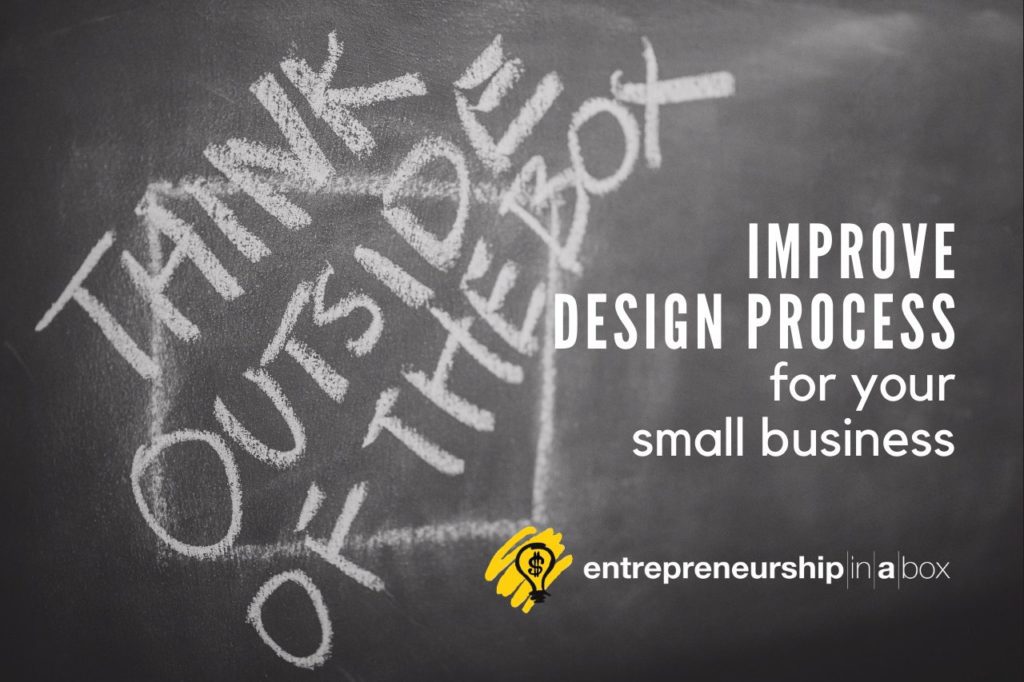Whether you are running a small business or handling larger corporate projects on a global scale, you can benefit from design thinking.
What is Design Thinking? Essentially, it is using creative systems for innovation and growth. In simple terms, it is being able to see things from a bigger perspective.
All designers learn how to think outside the box, and business owners can apply these precepts to problem-solving.
Simple Steps in the Design Process
With design thinking, you grow your business by taking a human-led approach to problems. No matter how complex your product or service, you start with these basic fundamental steps:
1. Empathy
This is one of the most basic requirements for understanding how humans operate. It is so rarely taught in business schools, yet every entrepreneur can benefit from the gift of empathy. Put yourself in your customer’s shoes. Try to imagine how they would think about solving a problem.
2. Define the problem
You need to ask the right questions in order to know what is not working, and how you can best improve. This is often achieved using prototypes or through team collaboration.
3. Discover new possibilities
Break your own rules and set new boundaries by exploring all possible solutions. Again, teamwork is key. Knowing your own environment is not enough to solve the problems your market faces on a global scale.
4. Test, test, test
Use prototypes on a small scale before going for your big innovation. This is the stage where you can still take your products back for testing, and where surveys or data will help you to plan for future products.
5. Implementation
Once you have discovered the solution, you can grow in ways that were not possible before. You are on the road to success.
More Questions to Ask in the Design Process
Design is now a tool of consumerism, but even before “designer” was even a career path, inventors and innovators had to adopt design thinking mindsets.
How can you take a similar approach to your small business? As an entrepreneur, you already know the importance of balancing desirability (what humans need and want) with technology and economic viability.
First, you must get away from thinking that design is just about fashion or aesthetics. Design thinking covers everything from education to innovation, to solving world problems.
In business, your design thinking must be human-centered. This is the first rule of innovation: Start with what humans need.
Ask yourself questions like the following:
- What makes life more enjoyable?
- How do I understand the culture in this context?
- How can my designs play a role in what my market needs?
Experiencing the Customer Journey
Next, set aside your own assumptions on the matter. Take surveys. Ask questions. Build prototypes on a smaller scale and test them immediately, so that the right questions start to present themselves (oftentimes, in the form of problems).
To know what your customers and potential clients need, you need to take the time to understand them and their issues. Find out what they hate, what they love, what they can’t stand, and what they need more of.
Finally, you can explore the possibilities and move forward competitively with your designs and services.
How can small business owners use design thinking?
Don’t just think about what you should build—start with thinking in order to build. Explore participation, engagement, and meaningful experiences that can be profitable in the end.
With prototypes, you can speed up this process. You can understand quicker, and your ideas will evolve quicker.
In times of change, we need new ideas. If you look around you, you might find that we are in the midst of global change. We are asking ourselves if there are alternative solutions to old problems.
Design thinking will force you to explore new alternatives, and when you can integrate this thinking into your business, you will solve the problems of your market. No matter what your business, you will get to the crux of the matter more efficiently. Design thinking as a business owner will allow you to take a more innovative approach to every problem. It will force you to investigate deeper, to ask the right questions, to collaborate with the best teams—so that you can find more powerful solutions.
Team Design Collaboration
To manage your design processes better, you need online, digital tools. Working as a team is only efficient when everyone feels at liberty to have a say, give and receive feedback, and ask questions.
You can improve this part of the process with interactive online prototypes, and a way to collaborate across multiple platforms. This is especially useful when working in remote teams, or handling projects in the cloud.
UXPin provides prototypes for business still in the design testing stages. For a free trial, and training in team design collaboration, visit UXPin today.





